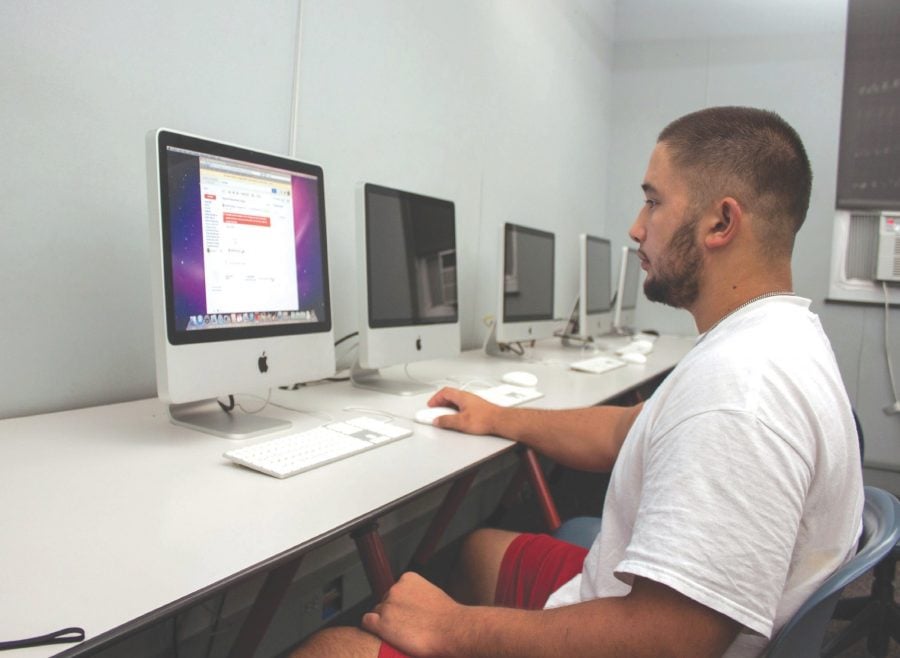Despite the many types of people who call Guilford College their own, everyone has a few things in common: following the core values, pursuit of knowledge and dependence on technology.
When students deal with wireless internet problems, new online learning systems or virtual security risks, the Information Technology & Services department continues to adapt and improve technology to make life easier for the Guilford community, while Hege Library works concurrently in more learning-focused uses for technology.
As far as technology goes, many different things are happening on campus. A recent and notable situation came up when when a crack appeared in the Guilford network’s safe haven.
“Bad stuff has been happening in email land,” reads a post in the Guilford Buzz by Information Technology & Services help desk team leader Ian Hulsey.
Phishing emails, which showed up in many email inboxes sourced from Guilford senders, have been students’ main tech complaint lately.
“If you get an email that says anything about your balance is due, financial aid stuff like that, nobody’s going to send an attachment,” said IT&S student employee and CCE computing technology & information systems major Donald Gillespie. “If you get an email from anybody you don’t know that has an attachment, straight up delete it.”
Besides avoiding suspicious emails with attachments, students can reinforce their security in other ways to avoid allowing the breaches in the first place.
“Please use a unique and strong password with numbers, letters, capitalization and maybe even a special character or two,” said Jake Hudson, who is also a said IT&S student employee and CCE computing technology & information systems major. “Two-step verification is also great.”
A few buildings away from Bauman Hall, the library covers new ground in finding ways to have technology work for students rather than against them.
Within the Research and Educational Services department, staff members assist those on campus with learning and research technology, including the brand new learning management system at Guilford, Canvas.
Some on campus are unaware of the full extent of services available at the library.
“(Students and faculty) know to come and find us when it comes to Canvas, because it’s new, and people are unsure about it,” said Tamika Davis, the digital pedagogy and scholarship technologist. “What we are working on is ensuring that people know what else we offer, like helping you with digital projects.”
While students should contact IT&S about password problems with Canvas, other questions, such as how to navigate within the system, should be directed to the Residential Education and Housing department. The campus can also keep an eye on the library for technology that will soon be available, such as the new Teaching, Learning and Research Collaboratory, or CoLab, which will be up and running soon.
Back at IT&S, the mechanics of the College’s tech are still at the forefront, being necessary for all the innovation elsewhere.
This year, GC-Secure is the main wireless network for student and faculty use, since it is, as the name suggests, the most secure.
“(GC-WPA) is no longer being shown as an available network,” said Hulsey. “So if you have a device that was previously configured for WPA it will connect, but … it is being phased out gradually as a network, the reason being WPA-type encryption is obsolete.”
IT&S is also addressing internet speed, although no drastic changes will be made until funding is available. However, if students notice particular times of the day or spots on campus with slow Wi-Fi, they are welcome to share that information with the tech department.
For any other changes to the technological landscape on campus, students should look for news both online and off, but should be wary of the hyperlinks they choose to click.







